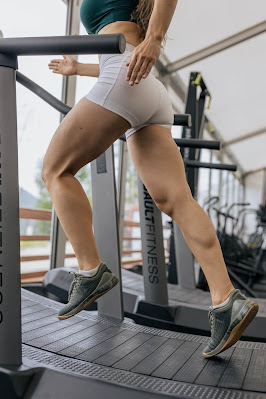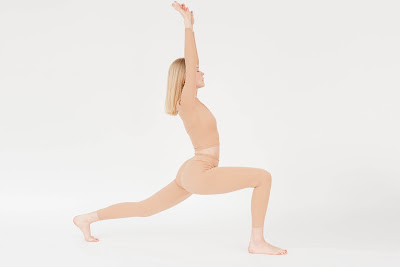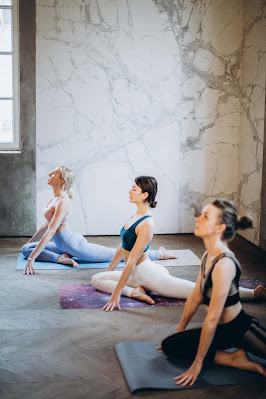Tight Hip Flexors 7 Easy Stretches For You That Actually Works
Tight hip flexors can result in difficulty in activities of daily living like standing, walking and sitting. Tight hip flexors may be problematic during running, jogging and other athletic activities as well.
Muscle imbalance as a result of hip flexor tightness can cause hip and lower back pain. Stretching of stiff hip flexors can improve flexibility and power of the muscle group as well as overall balance of the body.
Hip flexors are the group of muscles that flex the hip and help in to bring the knee close to chest and help you perform several tasks including walking, jumping, exercising, sitting, etc.
Sedentary life style and long sitting hours may cause tight or shortening of hip flexors. Taking a short break from long sitting hours and stretching the hip flexors need to be done to decrease the pain and discomfort.
What Are Hip Flexors?
During hip flexion, hip is flexed and the leg is brought up by a group muscles. These muscles work tighter and the group of muscles is called hip flexors. These muscles are primarily located in the front part of the thighs. These muscles are crucial for good posture, balance and stability during day-to-day movements like sitting, standing or taking a step etc.
Anatomically, there are 5 major muscles in the hip flexor muscle groups. They are briefly described below:
- Psoas Major – It is deep and long muscle. It originates from lumber region of the spine and inserts into lesser trochanter of femur (thigh bone). The meaning of “psoas” in Greek is “muscle of the lion”.
- The Iliacus - It is dee and triangular in shape. Iliacus originates mainly from pelvic bone. Some of its fibers inserts into lesser trochanter of femur and some joins the tendon of psoas muscle. In medical term, the iliopsoas muscle is the collective name for the combination of Psoas major and iliacus muscle.
- Pectineus – It is short muscle and also called as the groin muscle. It originates from pubic bone and inserts into lesser trochanter of femur (thigh bone).
- Sartorius – The longest muscle of the body! It is an oblique muscle. It originates from anterior superior iliac spine (ASIS) and inserts in to proximal part of tibia (shin bone).
- Rectus Femoris – It is One of the muscles of quadriceps group that originates from anterior inferior iliac spine (AIIS). It inserts into patella and the shin bone.
What Causes Tight Hip Flexors?
Every individual muscle of the body has its unique and important function. Likewise, hip flexors are critically important for our body. These muscles are not only responsible of steady and balanced motion but also to sit comfortably. These muscles are involved in everyday activities from standing, pulling your knees up, running and moving the legs sideways and many more!!
The Main Cause – Long hours Of Sitting
The main cause of hip flexors stiffness is sedentary behavior. According to research, hip extension flexibility was reduced in individuals with sedentary behavior resulting in increased hip flexor tightness. Most of the sedentary population has an average of ≥8 hours mean sedentary time who have tight hip flexors. Mettler et al., also reported that hip extension flexibility was limited in two-thirds of the investigated population.
It has also been demonstrated in research documents that prolonged sitting and physical inactivity can cause changes in muscular properties or bony limitations. These changes may diminish hip extension.
Other Causes May Be:
- Weakness of core muscle groups
- Injury
- Post-operative contracture
- Poor posture
- Any sport or activity which requires to bring knees to chest again and again
Symptoms Of Tightness of hip flexor
Tightness of hip flexor muscles can lead to various musculoskeletal injuries in the lower extremities.
- Restricted range of motion
- Decrease flexibility
- Lack of flexibility may cause early muscle fatigue
- Altered gait and movement patterns due to reduced flexibility
- Risk of falls due to negative impact on dynamic balance as well as on biomechanics of lower extremities
- There is a risk of lower back pain if hip flexors are too tight.
- Postural changes
7 Easy Stretches For Your Tight Hip Flexors
A good warm up is always advisable before stretching. The warm up increase the oxygen supply, temperature and metabolism. It psychologically prepares you for the physical activity. Warm up decrease the chances of muscular injury. 5-10 minutes warm up should be sufficient. You can try side lunges, leg swings and kicks.
1. The Standing Hip Stretching
How To Do Standing Hip Stretching
- Begin with standing position and keep your feet shoulder-width apart. Palm should be placed on your hips.
- Roll back your shoulders.
- Bend the upper back in slow motion too.
- Bend your neck backward to increase the stretch.
- Holding time – At least 5 to 8 seconds.
- Come back to the starting position slowly.
Sets And Reps – Minimum 2 sets of 3 reps or as per your comfort level.
Precautions:
- Avoid jerky movements
- Do not bounce
- Watch out for severe pain
- Don’t hold the breathing
2. Kneeling Hip Flexor Stretching
How To Do Kneeling Hip Flexor Stretching
- Stand straight and keep your left leg forward.
- Lunge down as much as possible until your right knee fully touches the ground. You can keep your hands on your waist or in front of chest.
- Push your hips little more in forward direction and stretch your right leg behind. Your spine should be straight while pushing.
- This will produce a sense of stretch in your hips and thighs muscles. Keep shifting your weight to the front until you feel a stretch.
- Holding time – At least 10 to 15 seconds
Sets And Reps – Minimum 3 sets of 3 reps or as per your comfort level.
Precautions:
- Be vigilant if you are obese
- Avoid bouncy movements
- Stop immediately if it pains
- Breath normally
3. The Camel Pose For Tight Flexors
How To Do Camel Pose
- Start with your knees hip-width apart in kneeling position. Make sure that your shin bone touches the ground/mat completely.
- Hold your pelvis with your hands. Your fingers should be pointing down. Now lean back deliberately.
- Slowly bring your hands on to your heels.
- Your thighs should be erect. The hips need to be directly above your knees.
- Holding time – 5 to 10 seconds.
- You can skip step 3 and 4 if you are a beginner and/or do not feel comfortable.
Sets And Reps – 3 sets of 3-5 reps or as per your comfort level.
Precautions:
- Weight bearing on knees may be difficult for obese person.
- Avoid bouncy movements
- Do not perform if it pains
- Breath normally
4. Pigeon Stretch For Stiff Hip Muscles
How To Do Pigeon Stretch
- Start with the Cat Pose. Place your knees directly below your hips and hands should be below your shoulders. Make sure that your toes are pointing out and your palms are kept flat on the floor.
- Fold your left knee and place it between your hands. Slide your left knee till your left heel is under your right hip. Your right leg should be fully extended on the floor.
- Now breath in and expand your chest and look at the ceiling.
- Now breath out and lower your chest slowly and touch the floor with your head.
- Hold the pose for as long as you are comfortable. Do nor hold the breath. Keep breathing in and out.
- Now do it with your right leg and repeat the above steps.
Sets And Reps – 3 sets of 2 reps or as per your comfort level.
Precautions:
- Pregnancy
- Avoid jerky movements
- Hernial pain
- Breath normally
5. Butterfly Stretch To Release Tightness
How To Do Butterfly Stretch
- Sit on the floor with your shoulders rolled back. Keep both your legs extended in front of you.
- Now bend your knees till you touch the soles together.
- Hold the feet together with your palms and draw them towards your groin.
- Holding time - At least 30 to 40 seconds.
Sets And Reps – 2 sets of 5 reps or as per your comfort level.
Precautions:
- Do not over stretch
- Avoid jerky movements
- Do not perform if it pains
6. Supine Bridging
How To Do Supine Bridging
- Lie down on your back in supine position. Bend your knees and put your feet on the floor/mat. Keep your hands close to your body with palms facing down.
- Push your hips up. Make sure that heels are on the floor/mat.
- Holding time – 5 to 10 seconds
Sets And Reps – 3 sets of 5 reps or as per your comfort level.
Precautions:
- Avoid jerky movements
- Do not perform if it pains severely
- Do not hold your breath
7. Couch Stretch
How To Do Couch Stretch
- Stand in a position so that the couch is behind you.
- Put your left foot on the couch, flex your right knee, and lower your body into a lunge. Go down till your left knee touches the floor.
- Make sure that your spine is straight.
- Holding time – 5 to 10 seconds before coming back to starting position.
- Repeat with right leg.
Sets And Reps – 3 sets of 10 reps or as per your comfort level.
Precautions:
- Pregnancy
- Avoid sideways movements
- Do not perform if it pains
- Breath normally
Take Away
A sedentary lifestyle and/or lack of physical activity are the main causative factor for tight hip flexors. Stretching of hip flexors regularly can prevent muscle stiffness, hip and low back pain. Do take short breaks. Walk around and stretch.
Frequently Asked Questions
What is tight hip flexors test?
It is called Thomas Test. Lie down in supine position. Bring your one knee close to your chest. If your other leg also lifts up slightly during this movement, the test is positive. A positive test means your hip flexors are tight.
How to sit with tight hip flexors?
When you are in a chair or on a desk try to keep your leg in figure of 4 position alternatively. Take short breaks in between long duration of sitting. Make a habit to stretch regularly.
How long will it take to lose tight hips flexors?
It is hard to provide a definitive time frame. It is a continuous process and will take time to lose your tight hip. However, regular stretching will prevent any further injury and tightening.
Also Read:











Great post! I didn't know I had tight hip flexors until I started taking barre classes and now I can't live without the pigeon and butterfly stretches... those are the ones that really stretches my hip flexors out the most!
ReplyDeleteThank you for sharing such an informative post!
Great post. I do youga, but I'm happy to learn more about hip flexors
ReplyDeleteReading this has made me realize that I need to do some stretches for this; I think I definitely experience tightness in my hip flexors and need to introduce something to improve this. Thanks for this!
ReplyDeleteI spend most of my day sitting at my desk so this post has been a wake up call - I've bookmarked it to remind me to start some hip flexing now!
ReplyDeleteThese are excellent exercises to release tight hip flexors and a very informative post. Thank you so much for sharing.
ReplyDeleteSO helpful! I love that you included photos these look great to try I need these for sure. Thanks for sharing!
ReplyDeleteI hear about hip flexors a lot in gym classes such as body pump. Great to now know what they are talking about.
ReplyDelete